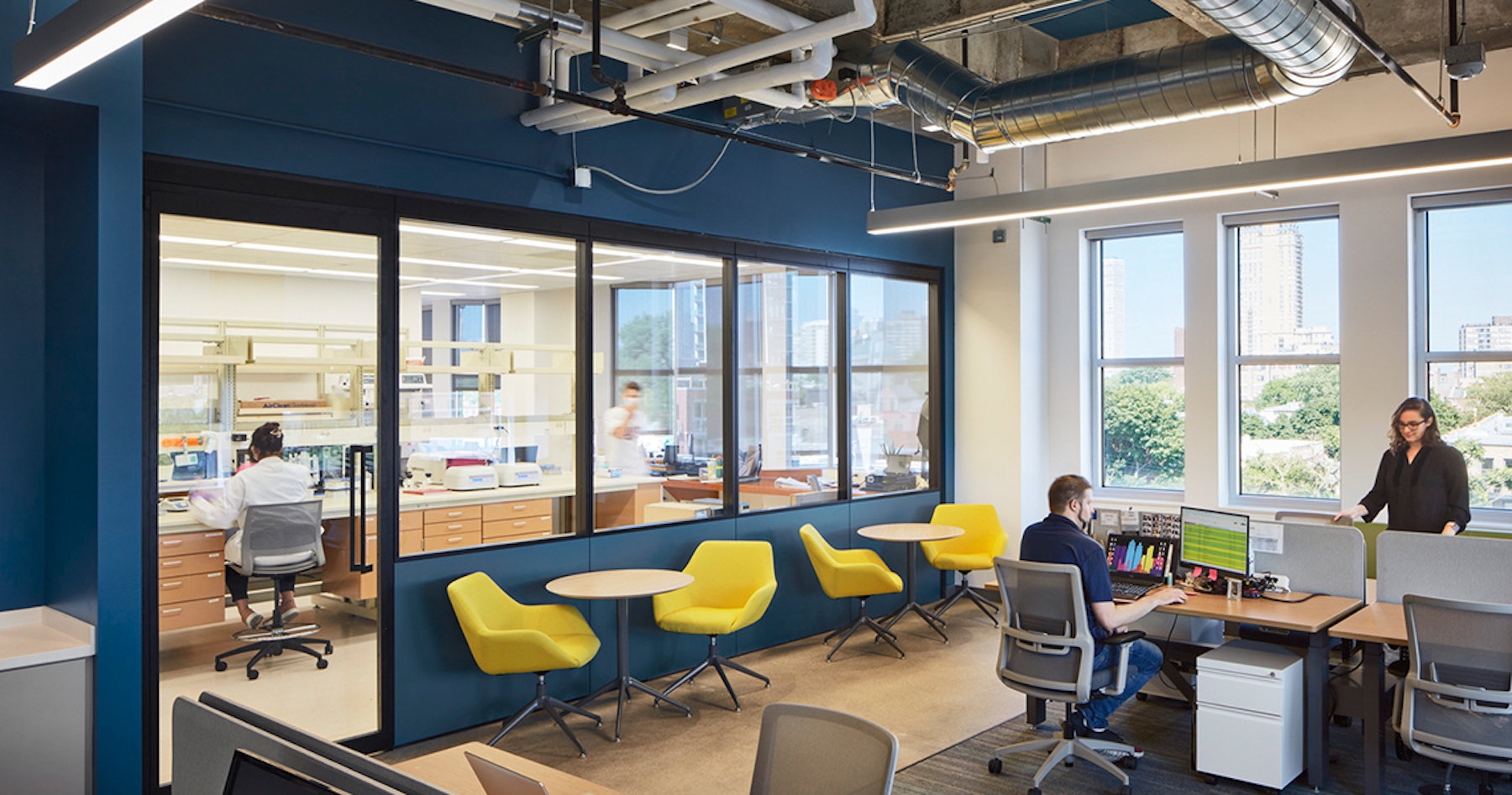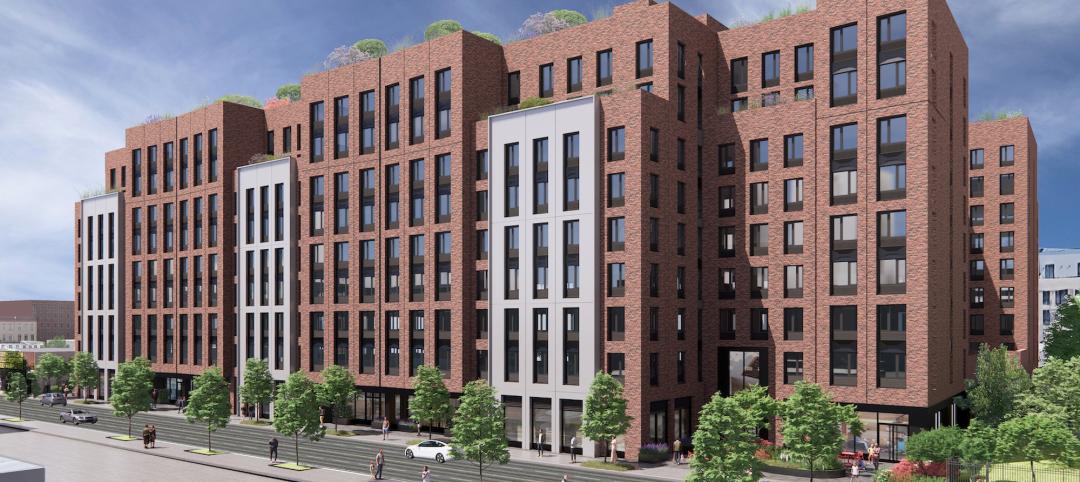The demand for technologically advanced, flexible, and optimized lab space for life sciences and biotech tenants is at an all-time high. To keep up with this demand, developers must be able to provide lab-ready spaces that will attract and retain this highly sought-after tenant sector. Whether transforming existing space or building new, developers must keep in mind the following three key considerations.
Speed-to-Market
Time is money—especially in this race for in-demand, high-quality lab space. While many factors can affect the speed-to-market timeframe, there are a few critical ones that, in our experience, developers must keep in mind when embarking on a lab project.
- Build the best team: Speed-to-market requires decisive, proactive and informed decision-making. Find partners who know this market and understand how to accelerate the project without compromising quality or “leaseability.” Owners, architects, engineers and construction teams must all be at the table to ensure that deadlines are set and met for each project phase. When challenges arise, this already assembled, “all-hands-on-deck” team will be ready to address schedule or budget issues without delay.
- Know the local regulations: The success of a project often depends on obtaining approvals from various governing bodies in an expeditious manner. Find a team that can navigate local jurisdiction and zoning laws that, in less-experienced hands, could delay a project.
- Develop a hazardous chemicals management plan: All too often, proper planning for chemical management within a science building is overlooked in the planning process. Local and international codes have specific requirements for storing and using chemicals in the lab. The higher the floor level within a building, the stricter chemical regulation and usage become. Having a chemical management plan, even during site selection and certainly during the design phase, can save both time and money in the long run.
Efficiency
The design team must determine key project drivers to optimize laboratory workflows and to provide space as quickly as possible for occupancy—all while reducing costs to remain efficient. Project drivers include the type of lab tenants to target and the specific infrastructure that must be in place to support the desired tenants. The goal is to “future-proof” the building by maximizing both efficiency and flexibility.
- Secure an accurate cost estimate: Another crucial factor in maintaining efficiency, both in design and in project cost, is to secure an accurate cost estimate. Obtaining an inaccurate cost analysis at the beginning of the project invariably slows down the process. The project team, or a reliable third party, can provide a reasonable estimate that will not lead to unexpected cost challenges after the project gets underway. Additionally, it is crucial to obtain an estimate from a firm that has extensive experience and expertise in lab planning so that the estimate considers lab costs in relation to the type of science that the lab is expected to support. An in-depth analysis of costs by a lab planning expert will also provide insight about equipment requiring long lead times, as well as potential alternatives to these items if budget and schedule adherence is jeopardized. Also, knowing the support requirements (such as roof-mounted, internal, or yard located) that regional jurisdictions will allow is an essential part of a robust cost estimate.
- Implement flexibility wherever possible: Lab designers understand how to incorporate flexibility within the constraints of the intensive utility requirements of labs. Ceiling-mounted services allow for more flexibility and reconfigurability, unlike floor-mounted services that might require core drilling and trenching. Open labs, floor-to-floor heights, and column placement are drivers for flexible space. Computational and dry labs vary greatly from wet labs; understanding specific tenant needs will enable the team to design to these specific requirements while remaining as flexible as possible.
- Carry the appropriate contingencies: To understand contingencies, developers must first understand local requirements, soil conditions, Authorities Having Jurisdiction, and zoning and planning regulations. Being familiar with these factors will allow the team to determine which contingencies need to be carried at the project’s beginning and then potentially dropped as the design matures and the project becomes more finalized.
Quality
Despite the ever-present need to expedite the delivery of lab projects, developers cannot sacrifice quality in the lab spaces. Competition is fierce to attract and retain the best life sciences tenants. The following actions will help developers avoid compromising lab safety, efficiency and function.
- Create laboratory standards: To provide a well-designed scientific workplace that is tailored to a specific mission and project requirements, robust laboratory standards must be in place, including standards for finishes (casework, body type, counter material, floor sheet or tile); house services (vacuum, air, RODI); benches (fixed or mobile, length, shelves, services, number of circuits); bench-to-desk to support space ratio; fume hoods (services, cupsink, length, sash, constant or variable air volume base cabinets); established ventilation rates; standby and emergency power requirements, and emergency stations; and plumbing systems and fixture selection. These standards are captured in a Basis of Design document that is adapted for each project.
- Understand space types and infrastructure: From the outset, the team must determine structural systems like floor-to-floor heights, column spacing, maximum vibration tolerances and space types. Constraints and opportunities will vary depending on whether the project is a renovation, conversion, or from the ground up. For example, for an office-to-lab conversion, the analysis will start with documenting how an existing office building meets the needs of a lab. Are the floor-to-floor heights sufficient to house the ventilation requirements in the ceiling plenum? Does the structure meet the live loads and vibration standards? Fire rating also matters given code limits on certain common toxic substances.
- Know what your tenants need to thrive: The most crucial driver will likely be what services and utilities the building must provide and whether those are shared between tenants or exclusive to a tenant. These requirements—such as lab gases—must be meticulously planned and laid out to ensure that the delivery and storage of the gases function without interruption. Speculative, lab-enabled office buildings are driven by short tenant timeframes and their specific demands. Make sure the team has quality project experience to pivot and produce work that secures and retains such tenants.
More from Author
CannonDesign | Sep 20, 2024
The growing moral responsibility of designing for shade
Elliot Glassman, AIA, NCARB, LEED AP BD+C, CPHD, Building Performance Leader, CannonDesign, makes the argument for architects to consider better shade solutions through these four strategies.
CannonDesign | Jan 3, 2024
Designing better built environments for a neurodiverse world
For most of human history, design has mostly considered “typical users” who are fully able-bodied without clinical or emotional disabilities. The problem with this approach is that it offers a limited perspective on how space can positively or negatively influence someone based on their physical, mental, and sensory abilities.
CannonDesign | Oct 23, 2023
Former munitions plant reimagined as net-zero federal workplace
The General Services Administration (GSA) has embraced adaptive reuse with Building 48, an exciting workplace project that sets new precedents for how the federal government will approach sustainable design.
CannonDesign | Aug 22, 2023
How boldly uniting divergent disciplines boosts students’ career viability
CannonDesign's Charles Smith and Patricia Bou argue that spaces designed for interdisciplinary learning will help fuel a strong, resilient generation of students in an ever-changing economy.
CannonDesign | Jul 10, 2023
The latest pediatric design solutions for our tiniest patients
Pediatric design leaders Julia Jude and Kristie Alexander share several of CannonDesign's latest pediatric projects.
CannonDesign | May 11, 2023
Let's build toward a circular economy
Eric Corey Freed, Director of Sustainability, CannonDesign, discusses the values of well-designed, regenerative buildings.
CannonDesign | Apr 10, 2023
4 ways designers can help chief heat officers reduce climate change risks
Eric Corey Freed, Director of Sustainability, CannonDesign, shares how established designers and recently-emerged chief heat officers (CHO) can collaborate on solutions for alleviating climate change risks.
CannonDesign | Mar 9, 2023
5 laboratory design choices that accelerate scientific discovery
Stephen Blair, director of CannonDesign's Science & Technology Practice, identifies five important design strategies to make the most out of our research laboratories.
CannonDesign | Feb 9, 2023
3 ways building design can elevate bold thinking and entrepreneurial cultures
Mehrdad Yazdani of CannonDesign shares how the visionary design of a University of Utah building can be applied to other building types.
CannonDesign | Jan 9, 2023
How modular solutions can help address skyrocketing construction costs
Modular builder Joshua Mensinger details three ways modular solutions aid in lowering construction costs.
















